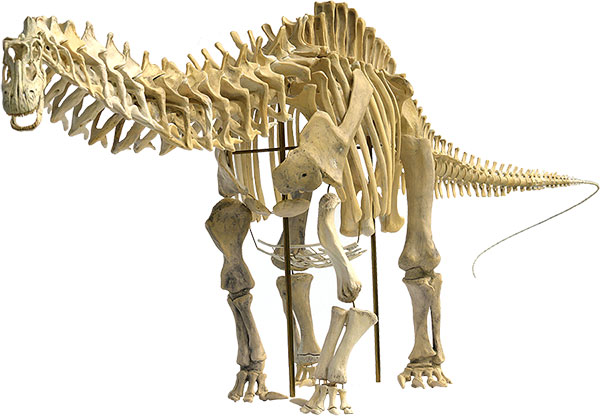Apatosaurus louisae CM3018
The most accurate and significant model in my collection, it was originally made by Phil Platt. Phil based his reconstruction on a particular specimen designated CM3018 (currently on display at the Carnegie Museum of Natural History in Pittsburgh PA, USA). Because it represents a real animal, it preserves many of the irregularities of an individual; distortions and asymmetries, fused tail vertebrae etc. The story behind Phil's reconstruction is remarkable and you can read about it here. Casts are available from Gaston Design, a company specializing in museum products.
Pictured above, the model is assembled but only about half completed. It was also the first model I built where every vertebrae (except the terminal tail whip) was a separate part. Separate vertebrae make for a superiour model but much of the project is spent refining the articulated surfaces of each vertebrae (i.e. each one must align perfectly with the one in front and behind, as in life). The massive vertebrae of an Apatosaurus are amazing but also very intricate and highly detailed—they present a particular challenge.
Ultimately, I'm attempting to capture more detail than the Gaston Design cast. For example, I'll separate and sculpt all of the individual bones of the manus (hands) and pes (feet) as well as separate the ilia (pelvic bones) from the sacral (pelvic) vertebrae so they can be sculpted (they were molded together and hidden in a solid matrix block in the original cast). The skull has already been remodeled with advice from Phil. Replacement gastralia (belly ribs) were scratch built. You can see the skull and some of the reference material on the Skull page.
